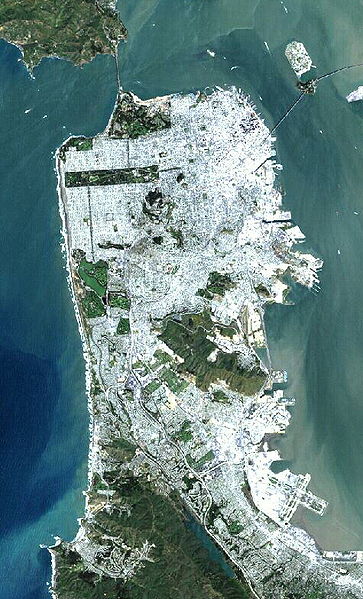When I first stepped foot on Golden State real estate (I’m not a California native), I had little idea what to expect. The year was 1972 and I was all of 19 years old.

For me the California experience was like no other I had had up to that time. Included in that was Disneyland, Lombard Street in San Francisco, smog and a host of other firsts. In fact, it was in September that year that I visited the City of Angels and the City by the Bay. The big story coming out of the latter area at that time was the christening of 71.5 miles of Bay Area Rapid Transit (BART) starter line. There was no question in my mind that in 1972 California was the place to be.
That original BART starter has since grown to 104 miles total and is still growing, the five-foot broad-gauge train making tracks to San Jose. Livermore in the East Bay could very well be the next to get BART.
San Francisco being the nerve center of Bay Area transportation activity, this city practically has it all. What S.F. lacks when it comes to transportation is an aerial tram, funicular, maglev and monorail, for right now, anyway.
Being built as this is being written is the city’s new Transbay Transit Center (TTC).
From a Transbay Joint Powers Authority-provided TTC Fact Sheet, referred to as the “Transbay Transit Center Project Overview” here is an excerpt: “The Transbay Transit Center in downtown San Francisco will transform transportation in California and stimulate the economy. As the largest approved public transportation project under construction in the Western US, the Center will connect eight counties of the Bay Area through eleven transit systems: AC Transit, Amtrak, BART, Caltrain, Golden Gate Transit, Greyhound, MUNI, SamTrans, WestCAT Lynx, Paratransit and future High Speed Rail from San Francisco to Los Angeles.”
Remarkable is that TTC will have that many transit options to choose from.
Also from the same Fact Sheet, is the fact that, California high-speed rail “will reduce California CO2 emissions by 1.4 percent statewide.” The first phase of the TTC, the Center itself to replace the present bus terminal, is slated for completion in 2017 at a cost of $1.6 billion. Total project cost will be $4.2 billion.
But the transportation capital offers more, way more.
I would certainly be remiss if I failed to mention SF’s quaint cable car. In existence since 1873, this system is now more than 139 years old. It was indeed revolutionary for its time considering that a moving cable hidden just below street level, the cable itself made accessible to corresponding cable car “grasps” or “grips” via a relatively narrow road-surface accessway, is what enables the attached cable cars to move. Track gauge or distance between rails is 3 feet, six inches (106.7 centimeters). These are operated as a part of the San Francisco Municipal Railway (MUNI or SF MUNI) system.
Besides cable cars, MUNI operates light rail trains, historic trolleys, trolley buses and buses (both diesel-powered and electric).
Meanwhile, predating the cable car is the San Francisco to San Jose “commute” trains the system still seeing regular, active service.
The original 47-mile line commenced operation in June 1864 making it one of the oldest continuously operating rail lines west of the Mississippi River. The Caltrain name was created by the California Department of Transportation (Caltrans) in 1980 when the Southern Pacific Transportation Co. was contracted by the state transportation department to operate the train system. Operations completely changed hands in 1991 when the Peninsula Corridor Joint Powers Authority took control. Service reached Gilroy to the south in 1992.
And certainly not to be overlooked is the San Francisco International Airport (SFO), besides serving as an airport receiving both domestic and international flights, SFO has its own on-site people mover to shuttle travelers to and from terminals, BART, parking and more and aptly named AirTrain, a fully automated system opened to the public in 2003.
Rounding out the transportation picture in the City by the Bay and considerably less green are the various water-borne services such as the ferry boat operations and, of course, myriad highways and secondary thoroughfares.
I count myself among the lucky having had the opportunity to ride a number of area transit services on various visits. Golden State transit is golden, especially in San Francisco.
Image above: NASA and courtesy of the U.S. Geological Survey
– Alan Kandel
This post was last revised on Nov. 28, 2019 @ 8:43 p.m. Pacific Standard Time.